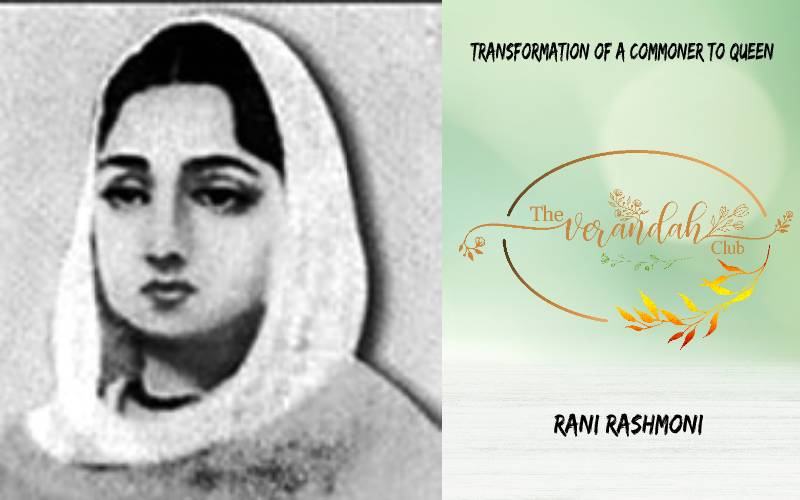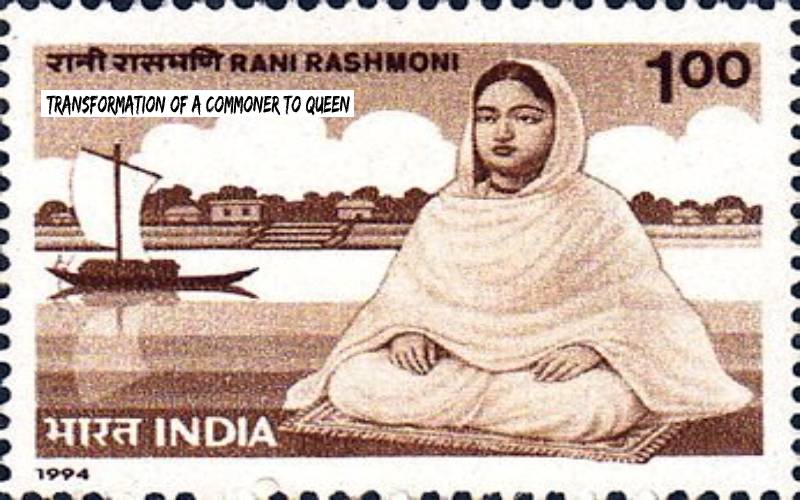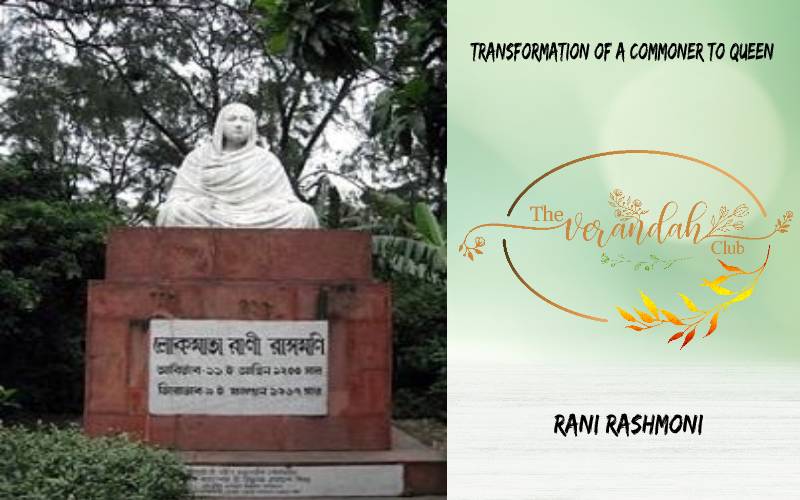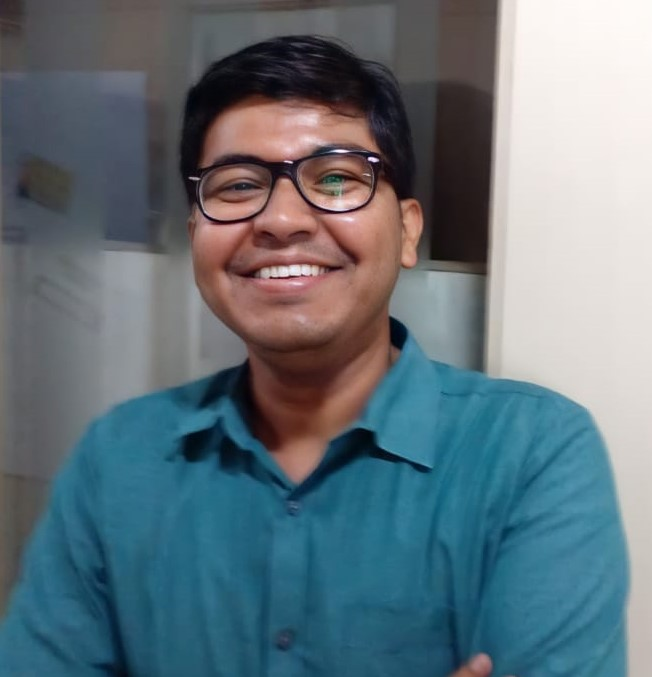Bengal Diaries - Episode 11
28th September 1793
Harekrishna Das and his wife Rampriya, residents of Kona village, in present day North 24 Parganas district of West Bengal, were blessed with a daughter. They named her Rashmoni. When she was just seven, Rashmoni lost her mother. At the age of 11, Harekrishna arranged her marriage to Babu Rajachandra Das, a very wealthy Bengali gentleman of Janbazar in Central Calcutta. Their marital life was one of the happiest and the couple was blessed with four daughters.

However, when Rashmoni was 43, her life crashed down as Babu Rajachandra Das passed away. Without a male heir, the large business estate of Rajachandra Das was in disarray. Luckily, Babu Rajachandra was an unconventional man. He deeply loved Rashmoni and often involved her in matters of trade and commerce. Rashmoni took special interest in his philanthropic ventures. The couple financed construction of pucca roads, ghats for public bathing, drinking water tanks, old age homes and soup kitchens for the destitute, all over the city.
On Rajachandra’s death, Rashmoni took charge of the estate which was an unheard-of thing for the times when women were strictly ensconced in domesticity. But here was no ordinary woman. After all, the great social reformer Raja Ram Mohun Ray, a close acquaintance of her husband had blessed her saying “May you dispel the darkness from the lives of hundreds of hapless women. May you live up to your name and become the queen of the masses.” Rashmoni certainly proved his words true. She not only ran the business affairs of Janbazar estate most efficiently but also proved herself to be one of the greatest philanthropists and reformers of the time.
More than anything else, what made Rashmoni stand apart was the sheer force of her character. From the orthodox upper-class society to the British overlord, this Bengali widow remained unintimidated by anyone. She was a great patron of religion and at her Janbazar home, all Hindu festivals were celebrated with great pomp and fervor.
Once, an idol of God taken for immersion from her home was making its way to River Hooghly. It was accompanied by beating of drums, conches etc. It disturbed an Englishman who was sleeping in his home. He moved the Governor’s council to get all such religious processions banned. Rashmoni was duly notified, but she refused to comply. Then the government imposed a financial penalty on her. In response, Rashmoni ordered cordoning off a stretch of road in front of her home stopping all traffic. Meanwhile, strong public protests and riots broke out among the city’s Indian residents in anger due to the fines imposed on Rashmoni. The government was forced to withdraw both the order and the fine.
Another time, the British administration imposed a hefty tax on Indian fishermen for fishing in the Hooghly. It made their living tenuous. The poor fishermen had only one person to whom they could turn to, and it was Rashmoni. The lady tried to reason with the government, but they refused to budge. On Rashmoni’s orders, huge metal chains were strung across the Hooghly. It blocked the movement of merchant ships and vessels. The administration had no choice but to back off and withdraw the tax.
Such acts made Rashmoni a darling of the masses and she was widely known as Rani (Queen) Rashmoni. Born in a poor farmer family, she empathized with the causes of the poor folk and fought tooth and nail for them. During her time, the south-eastern border of Calcutta, where the EM Bypass today runs, was lined with forests and swamps that ran right up to the Sunderbans delta. Living in these forested marshlands were a group of brigands who terrorized the people passing across.
When the news reached Rani Rashmoni, she sent a force to capture the brigands. Some of the leaders were brought before her. When she asked them why they indulged in loot and robbery, they pleaded that they had no other way of earning livelihood. Rashmoni then ordered clearing of the jungle and establishment of pisciculture (Fish farming) in that area. To this day, that region is lined up with fishing bheris (Fish farming lakes & ponds).
Undoubtedly Rani Rashmoni’s biggest legacy is the Kali Temple at Dakshineswar. Yet the construction of this seat of worship was mired in controversy. As a deeply devout woman, she had planned to take a pilgrimage to Kashi in 1847. The night before her boat was to sail, she received a vision in her sleep. The mother Goddess Kali appeared and said her, “There is no need to go to Kashi. Install my statue in a beautiful temple on the banks of the Ganges River and arrange for my worship there. Then I shall manifest myself in the idol and accept worship at that place.”

Rashmoni belonged to a lower class and the upper caste sections erupted in furor when she announced its establishment. However, she held her fists firm and ensured that by 1855 the temple was ready. She spent ₹9500 on the construction and the idol was installed on 31st May 1855. More than one lakh Brahmins were invited to take part in the opening ceremony. Thousands of poor were fed on the occasion on Rani Rashmoni’s orders.
Besides the Dakshineswar temple, Rashmoni also financed construction of a road for pilgrims traveling from Subarnarekha River to Puri and ghats for bathers by the Hooghly in Calcutta namely Ahiritola, Nimtola, and Baboo Ghat (Named after her deceased husband Babu Rajachandra).
Despite not receiving formal education herself, she realized the importance of education and donated generously to both the Imperial Library (Present day National Library) and the Hindoo College (Present day Presidency College). She held a forward-looking point of view and supported abolishing of Sati-daha, polygamy and child marriage. When Ishwar Chandra Vidyasagar was fighting almost alone for introducing widow remarriage, Rashmoni provided him tacit support both financially and morally.
When her selected chief priest for Dakshineswar, Ramkumar Chattopadhyay passed away shortly after inauguration of the temple, she went against collective advice and made his younger brother, the unorthodox Gadadhar Chattopadhyay his successor. In time, the man attained immortality as the great sage Ramkrishna Paramahamsa. One of his disciples travelled to the west decades later and taught the world about the great religion of Hinduism, the man whom we know as Swami Vivekananda. Rashmoni had quickly spotted the wisdom and intense spirituality inherent in Gadadhar when everyone was against his appointment and branded him “crazy” and “eccentric.”
Post the establishment of Dakshineswar temple, Rani Rashmoni’s health gradually deteriorated. It was as if the founding of the temple was her prerogative in life and then she was liberated to meet her maker. In 1861, this phenomenal lady took her final breathe leaving behind an unparalleled legacy.


Based out of Kolkata, Trinanjan is a market researcher by profession with a keen interest in Indian history. Of particular interest to him is the history of Kolkata and the Bengal region. He loves to write about his passion on his blog and also on social media handles.
References:
https://en.banglapedia.org/index.php/Rasmoni,_Rani
https://feminisminindia.com/2017/10/18/rani-rashmoni/
NEXT ARTICLE

At the southernmost tip of this mesmerising ensemble lies the majestic Great Nicobar Island, boasting an impressive landmass of about 910 square kilom...

Bharath has always been a land traversed by spiritual masters/ Guru since time immemorial. These spiritual masters have always upheld the core princip...

South India contains its fair share of unique pilgrimage centres. These divine places of worship have a prominent Sthala Purana, devoted followers, di...